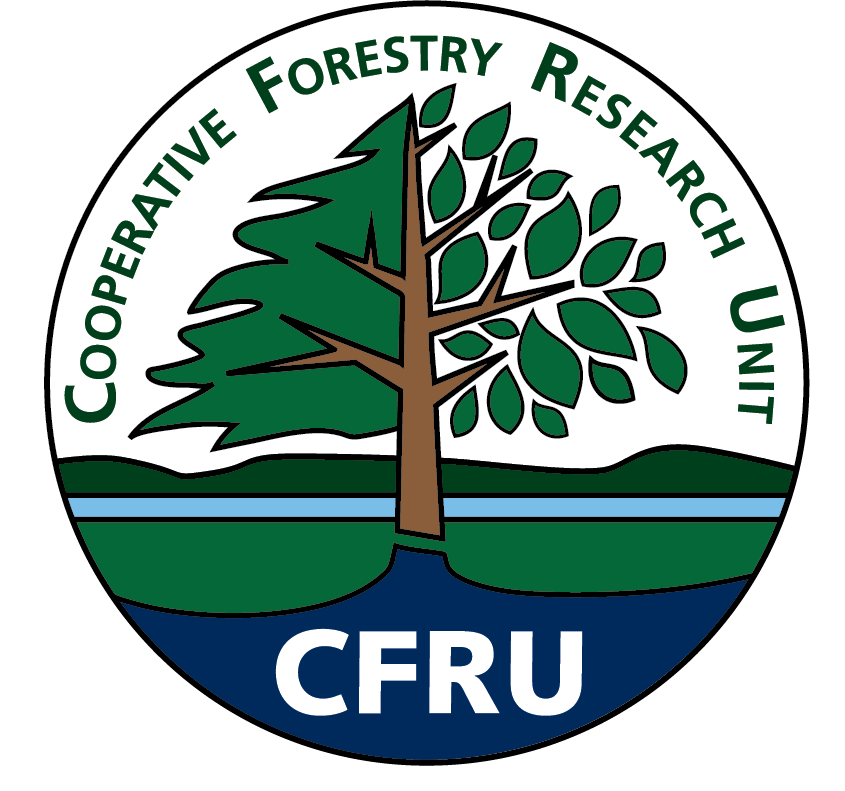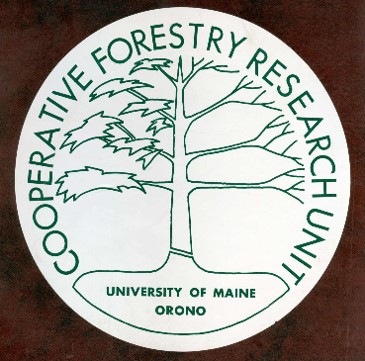
About the CFRU
The Cooperative Forestry Research Unit (CFRU) is a stakeholder-driven research cooperative housed at the University of Maine. It includes 33 member organizations representing over 8 million acres of Maine’s Forest (half of all forestland in the state). CFRU Cooperators include Maine forest landowners, wood processors, conservation organizations, and others that support the mission and objectives of the CFRU. The CFRU is funded by voluntary financial and in-kind contributions from its members to The University of Maine.
The goals, objectives, and operating procedures of the CFRU are re-evaluated every five years and incorporated into a Program Prospectus. An Advisory Committee composed of representatives of member organizations guide all CFRU activities. A Research Team consisting of the Program Manager, Research Coordinator, scientists, and technical support personnel are responsible for achieving CFRU objectives through research projects approved by the Advisory Committee.
CFRU research focuses primarily on developing applied information that can be used by member organizations to improve forest management. Current CFRU research focuses on silviculture, forest productivity, forest modeling, and wildlife habitat issues related to the management of Maine’s commercial forestlands. Findings from CFRU research are promptly disseminated to Cooperators, and completed research is published in refereed scientific journals. The CFRU is always open to new research ideas and proposals that have important implications for forest management in Maine.
The CFRU is a core research program of the Center for Research on Sustainable Forests at the University of Maine.

History
Created during the spruce budworm crisis of the mid-1970s, the CFRU was one of the earliest forest industry/university research cooperatives in the United States. Much of the CFRU research during the next 40 years followed from questions that arose as a result of the natural development of forests damaged by the spruce budworm outbreak, and continues to lead the way in helping Maine prepare for and respond to the next spruce budworm outbreak.
The CFRU focus has ranged from developing effective strategies to manage damage from the spruce budworm in spruce-fir stands, to determining how to successfully regenerate forests devastated by the spruce budworm, understanding how to best space young trees using precommercial thinning, understanding the habitat requirements for wildlife (such as deer, moose, small mammals, American marten, and Canada lynx), and understanding how to best commercially thin and model the growth of maturing forest stands that developed in the years following the 1970-1980s spruce budworm outbreak. CFRU research has also addressed a wide variety of other forest management questions over the years, and has a number of long-term research sites that are home to projects focused on commercial thinning, adaptive silviculture, timber harvestings, and habitat use, among other topics.
CFRU researchers and staff have produced hundreds of publications and educational events for cooperators, policymakers, students, and others interested in the results from CFRU-sponsored research. These results have had widespread application across the northeastern United States, eastern Canada, and other parts of the world.
